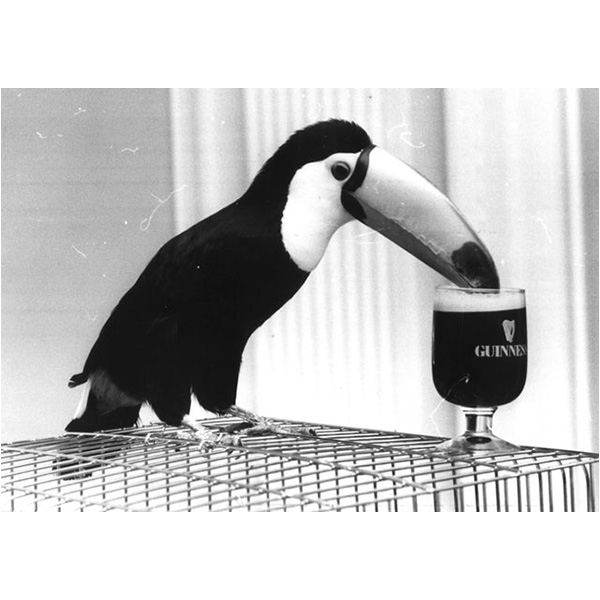As St. Patrick’s Day’s Day approaches, we are wondering why a bird which lives in the treetops of South American rainforests was used to promote an iconic Irish beer. Carlton ware began making Guinness advertising ceramics in the 1950s and Royal Doulton was commissioned to make Guinness toucans by Millennium Collectables.
Guinness has been brewed in Dublin since 1759. The first eight barrels of Guinness porter arrived in America in 1817, followed across the Atlantic by waves of Irish immigrants who made it a popular brew. However, when sales of the beer declined in the 1920s, Guinness commissioned an advertising campaign from S. H. Benson. In the early 1930s, John Gilroy, their resident artist, illustrated a menagerie of zoo animals to promote Guinness. Toucans became synonymous with the brand in 1935 following a poem by the crime writer Dorothy Sayers, who wrote advertising copy for Benson. The slogan “Guinness is good for you” was very successful. Doctors claimed the iron rich drink had medicinal purposes and until the 1950s women in Irish hospitals were given Guinness after giving birth.
If he can say as you can,
Guinness is Good for You,
How grand to be a Toucan,
Just think what Toucan do.
Gilroy created nearly 100 advertisements and 50 poster designs, many starring the toucan in a variety of situations. He even designed some ads for the American market with toucans flying over famous landmarks, such as the Statue of Liberty, the Golden Gate Bridge and Mount Rushmore, but they were not produced. Despite these advertising images, Toucans tend to hop more than they fly, and their bright colors provide camouflage in the rainforest canopy. Indigenous peoples in South America believe toucans are conduits between humans and the spirit world. Gilroy was not the first artist to endow the picturesque toucan with a human personality. Charles J. Noke at the Royal Doulton factory modeled a toucan in a tailcoat in 1920 and it was adapted also as a place name holder.
Guinness have been responsible for some of the most memorable advertising campaigns in history. In 1954, Guinness first published their Book of Records as an advertising ploy and today it holds its own record as the bestselling copyrighted book series of all time. During the 1950s, Carlton Ware produced a series of promotional pottery figures of Guinness loving animals from Gilroy’s advertisements. The toucan was revived by Royal Doulton in 2000 for Millennium Collectables who commissioned a collection of nostalgic British advertising icons.
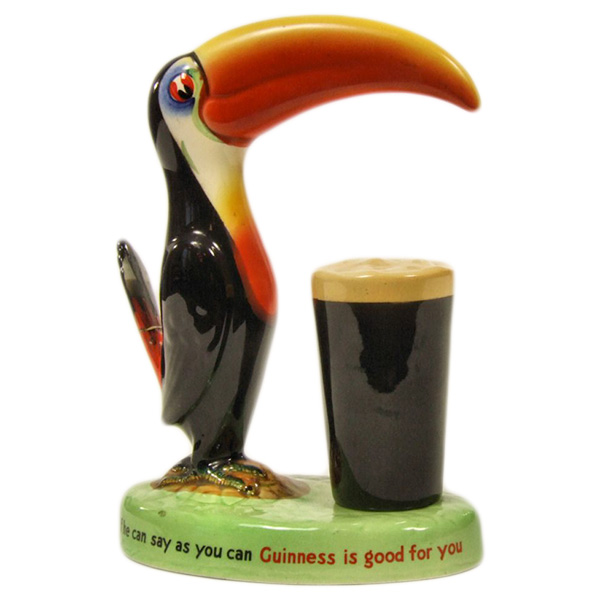
Carlton Ware Guinness Toucan
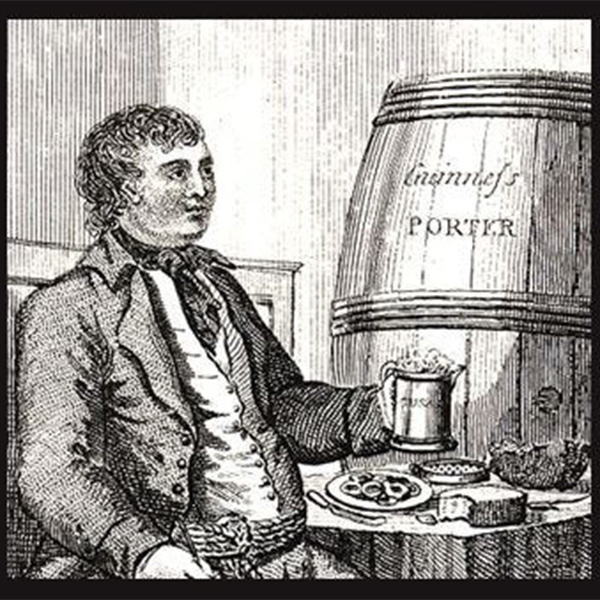
First Guinness Advertisement 1794
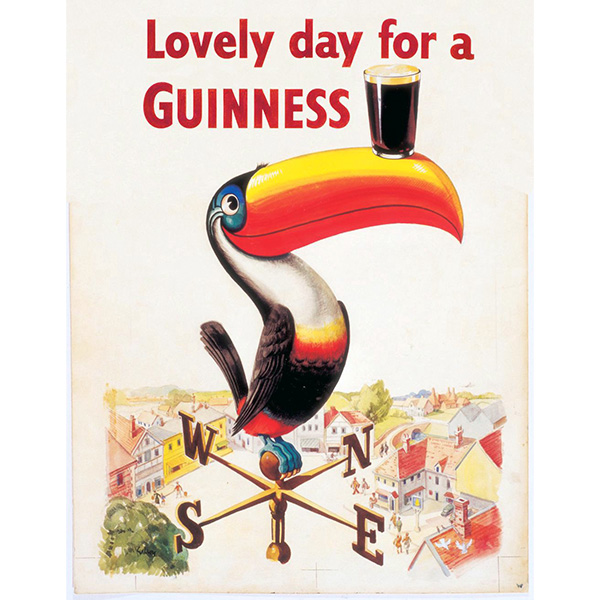
Guinness Advertisement
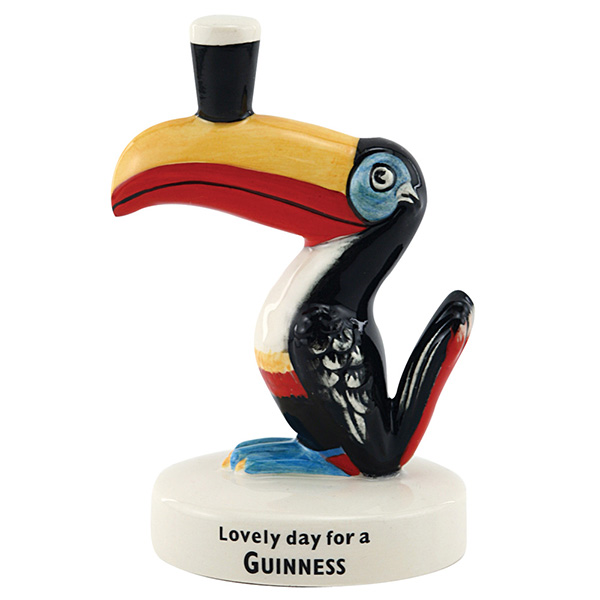
Millennium Collectables Guinness Toucan
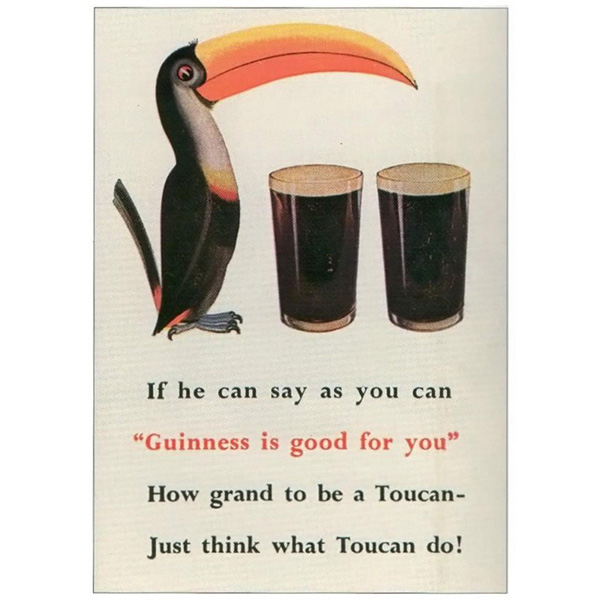
Guinness Advertisement
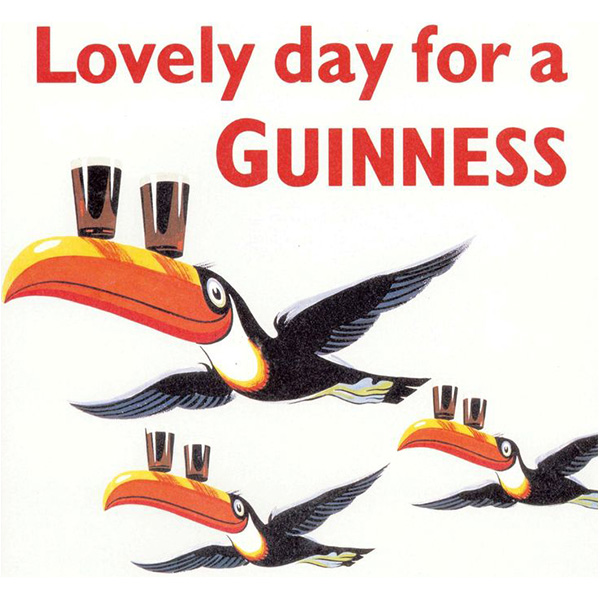
Guinness Advertisement
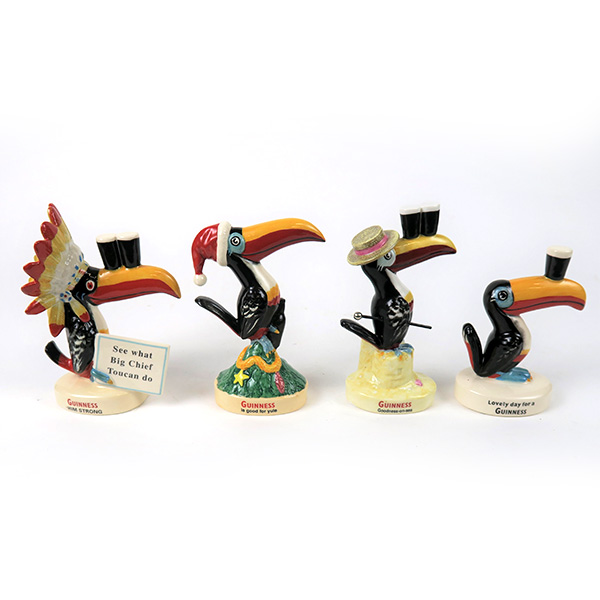
Millennium Collectables Guinness Toucans
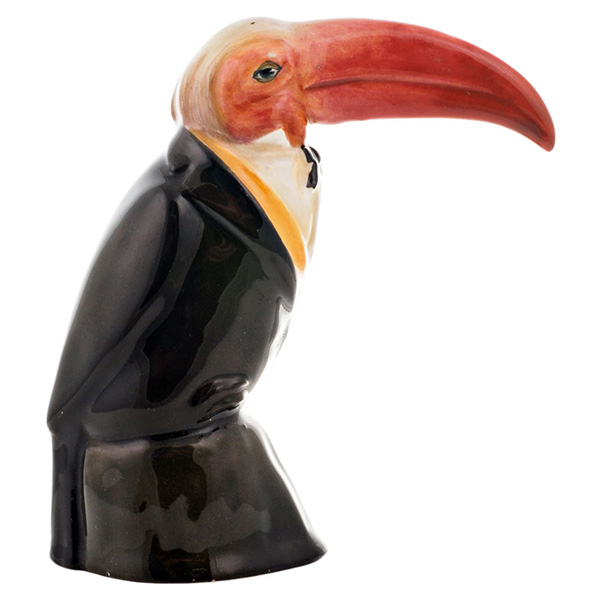
Royal Doulton Toucan
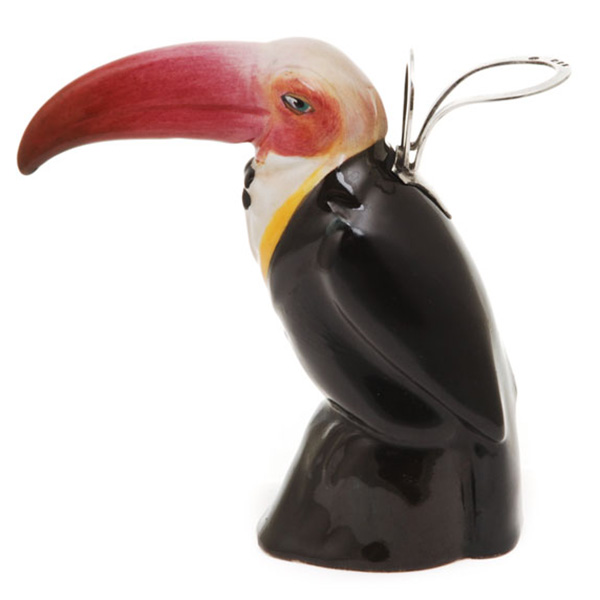
Royal Doulton Toucan place name holder
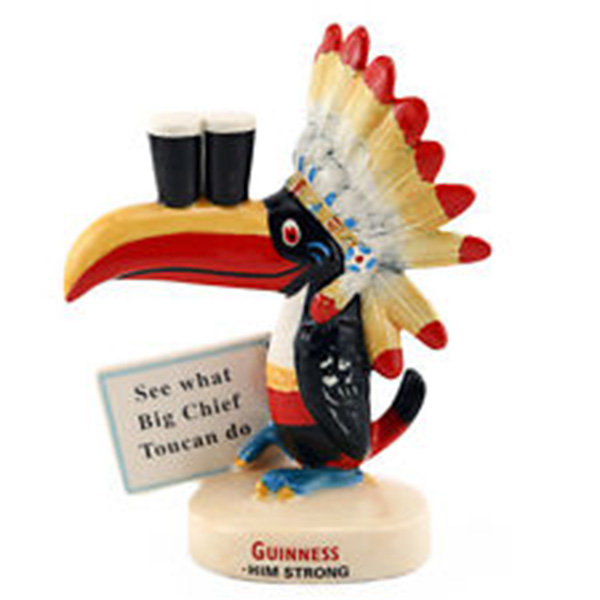
Millennium Collectables Guinness Toucan

